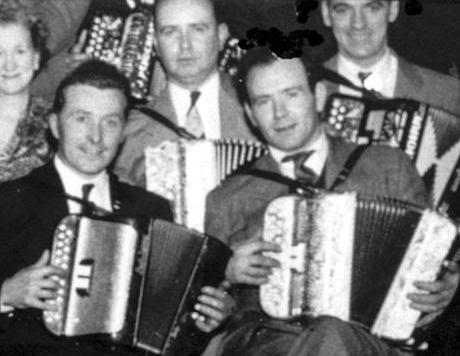Diatonic button accordions produce their sounds by pulling or pushing on the bellows; unlike piano accordions where each key produces one note regardless of which way the bellows moves.
Diatonic button accordions typically feature bisonoric tone production, meaning each button produces two notes when pressed or pulled – much like harmonicas! This makes the instrument very similar.
What is a Diatonic Accordion?
Diatonic accordion players are most often associated with traditional Irish music; however, this versatile instrument can also be played across genres including folk music, rock music, jazz music or even death metal! Learning an accordion can be both accessible and exciting!
Diatonic accordions (also referred to as bisonoric accordions) feature a keyboard with buttons that produce two notes when bellows are pulled or pushed, in contrast to their chromatic counterparts which use keys with two notes; when bellows are drawn or pushed the resultant notes are different from when the bellows were drawn/pushed.
Diatonic button accordions are among the most popularly used instruments today in Europe and North America, making travel more convenient. Smaller than its chromatic counterpart, diatonic accordions can often be found at folk music festivals as well as being an excellent choice for traditional Irish music performances. Plus they’re easy to pick up – perfect for beginners wanting to give something different a try!
Diatonic Accordion History
The accordion is one of the world’s most iconic musical instruments, used across numerous genres of music.
The instrument evolved from squeezebox- and aerophone-type instruments used since ancient times. Its invention occurred in Europe during the 19th century and later adopted into various folk music traditions across the globe.
Diatonic accordions have become an integral component of many musical styles, from traditional music and world music to jazz. Furthermore, they play an integral part in both modern and classical genres of music.
There are various diatonic accordions, from bandoneons with their distinctive sound to Irish concertinas and melodeons. Many different regions also utilize diatonic accordions differently; bandoneons may be found playing Cajun/Zydeco music while concertinas may be part of traditional Irish tunes.
Diatonic Accordion Techniques
Diatonic accordion players have many techniques available to them for playing different harmonies or using it as accompaniment for other instruments.
Diatonic accordions consist of two rows of buttons used to play different notes, making them popular choices in folk music performances.
Tex-Mex button accordions are popular choices among Conjunto, Norteno and Zydeco groups alike, and there are even three row models available.
Hohner developed the International System, the most frequently employed layout. This layout positions buttons in rows starting at the lowest key and is widely utilized by Tex-Mex accordion players.
Contrasting with its bisonoric counterpart, which employs an almost entirely chaotic arrangement of keys, the unisonoric bandoneon uses a chromatic layout with each button playing the same note when opened or closed – this makes learning the instrument much simpler, making it ideal for beginners as well as anyone wanting to quickly memorize several pieces quickly.
Diatonic Accordion Styles
Diatonic accordions come in many different sizes and designs, from single rows of treble buttons to multiple rows with up to 12 bass keys. Furthermore, some models feature switches on the keyboard that close or open different banks of reeds for further altering octaves and sounds.
Diatonic accordion styles span from the simple one row melodeon used in traditional English music, to more elaborate 2-row diatonic button accordions used by Irish musicians. Zydeco players and Cajun musicians may utilize one row diatonic button accordions with up to 4 ‘stops” at their top for various tones.
The diatonic button accordion is an instrument capable of transposing any musical scale to another key, making it very accessible and easy for beginners to learn. Its versatility also makes it useful when learning all the notes of one scale such as C major without needing multiple instruments tuned specifically in that key!



